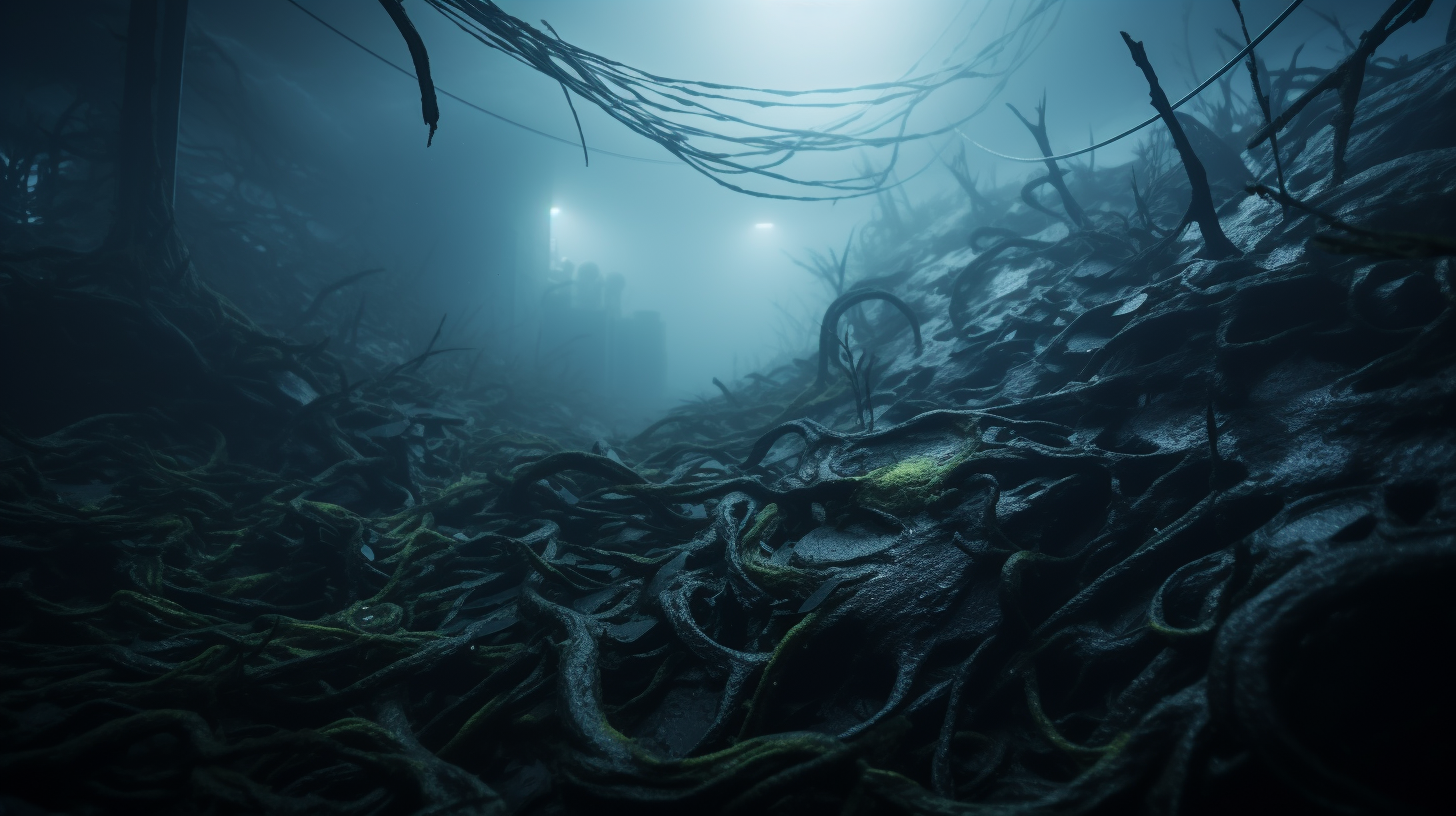The fathomless dark waters of the ocean’s abyssal zone, a realm that lies between 3,000 to 6,000 meters beneath the waves, has descended further into an inexplicable void. Where the faint glows of bioluminescent creatures once provided a ghostly lantern parade, the deep is now shrouded in a perpetual twilight, an impenetrable darkness that swallows all life and hope whole.
It’s a paradox that the deeper one travels into the ocean, the closer one seems to come to an otherworldly starscape. Here, in the Abyss of the Abyssal Zone, the crushing pressure and lack of sunlight have crafted a landscape that defies the very notion of habitation. Yet it was inhabited, once. Strange, enchanting creatures with features wrought from the pressures of evolution, made this no-man’s-water their mysterious home.
But the unrelenting tide of human interference – chemical spills, discarded plastics and fishing nets, the cacophony of subaquatic noise pollution – has progressively silenced the few voices this deep world possessed. The now echoless abyss stands as a testament to what was lost, a dire reflection mirrored in our own potential future.
The bottom trawlers that once scarred the seabed have left behind a legacy of desolate landscapes and broken ecosystems, visible only to the eyes of remote-operated vehicles that dare delve into these depths. The extinction here is silent and out of sight, but it reverberates far louder than any tempest at the surface. The once intricately woven fabric of this abyssal community, now unravels in the spectral currents, its threads disappearing into oblivion.
Delicate corals that took millennia to grow stand bleached and brittle, crumbling under the lightest touch. The graveyard of the deep-sea floor hosts not just the skeletal remains of these structural marine entities but also, poignantly, the lost opportunities for discovery and understanding.
It’s a twisted irony that these depths, once the final frontier on our own planet, should become hollowed by the consequences of actions taking place miles above. The abyssal dwellers’ life-giving carbon cycle essential for deep-sea survival now falters, balanced precariously on the edge of collapse, threatening to pull down the remaining vestiges of their existence.
What should resonate as a clarion call to those walking on terra firma is the parallel our future may hold with the fate of these depths. There may come a time when the beauty and complexity of life on land could fade into an echo, similar to the ghostly specters of the Abyss; its silence a somber backdrop to the cacophony of human civilization’s march towards oblivion.
The lure of the abyss, with all its alien allure and the promise of unfathomed secrets, may forever be shrouded in a cloak of desolation, as if the universe had pulled a dark curtain over one of its most enchanting acts, unwilling to share it any further with the unappreciative audience above.
In this gloaming terrain, where the pressure is crushing and darkness absolute, the final chapters of life are being written in the sand and silt. It’s an epitaph that reads not just for the creatures of the deep, but for ourselves as well.
The ‘Abyss of the Abyssal Zone’ waits, an indifferent observer, to see if we change the narrative from a story of loss to a legacy of lessons learned. While hope seems but a fragile thought amidst such vast darkness, the true power of the abyss lies in its silent call to action; a challenge whispered to the surface – will we listen, or will we let the deep drown in its own somber dirge?
